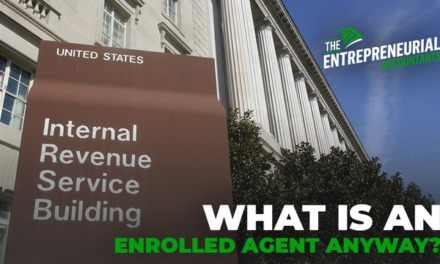The big moment has arrived…
You’ve done the hard work of marketing your accounting firm, finding the right prospects, and showing them the value that you have to offer.
They’re in. They want to work with you. Now what?
It’s time to send the new client an engagement letter so you can get paid and get to work.
Why is Having a Great Engagement Letter So Important?
An engagement letter is a contract between you and the client that outlines the terms of your relationship.
It spells out what you do for them, what you need the client to provide, how much and how often you get paid, and more.
A great engagement letter should:
- Clearly define the scope of the work
- Prepare your client for what they can expect
- Show your client what you expect FROM THEM
- Prevent or reduce scope creep
- Protect you from possible future complaints
And more.
_______________________________________
Sick and tired of wasting time writing engagement letters?
Download our free templates instantly here.
_______________________________________
Now, a relationship with an accounting client is just that – a relationship. There will be some bumps along the way and the occasional surprise.
But a great engagement letter anticipates such problems and reduces their impact on your business and client relationships.
Let’s talk about some of the benefits you’ll get from using a rock-solid engagement letter with all of your clients.
Defining Your Boundaries
If you want to have a successful and profitable accounting practice (and who doesn’t?), you need to minimize the amount of time you spend on tasks that don’t pay.
If you begin an engagement with a client without defined boundaries on the scope of the work, you’ll almost always find yourself doing things that you’re not really being paid for.
Little by little, the client will ask favors and add things to your plate, increasing your workload without increasing your income. If you’re not familiar, this is what we call scope creep.
By laying out exactly what you will do for your client and how often you will do it, you will set clear boundaries for the relationship. If they ask you to do something outside the scope of the engagement, it’s much easier on the relationship if you have a document to refer to.
You can simply point them back to the engagement letter, let them know it is not within the scope of the agreement, and offer to adjust the fees to include this service (if it’s something you want to offer).
Setting Client Expectations
The key to healthy and happy client relationships is setting clear expectations from the very beginning of your engagements.
The reality is, if you don’t define your boundaries in writing, they will never know the exact scope of the work that was agreed on. This increases the likelihood that they’ll feel as if something should be included that is not. They may think they’re paying too much and getting too little, even if your fees are perfectly reasonable.
There we have the beauty of a solid engagement letter. It ensures that your client knows what to expect of you and, equally important, what’s expected of them.
It can also serve as a powerful tool for last-minute screening. Hopefully, your conversations with the client have already set their expectations, but your engagement letter can help clear up any confusion or uncertainty your new client might have about working with you.
If they are, in fact, expecting very different boundaries from what you lay out in your letter, now is the time to find that out. You don’t want to be a few months into the engagement and find out that the client has expectations that don’t align with your own. That’s how nightmare clients are born.
Avoiding Scope Creep
Without a well-defined engagement letter, scope creep is a real problem. But what exactly does it look like?
Let’s say, for example, that you offer tax services but not bookkeeping. You expect your clients to bring you a clean set of books that are ready to go. You need an engagement letter that sets that expectation and lets the client know exactly what they need to have ready for you to do your job.
Without that clear engagement agreement, your clients might start to add a task here and task there and ask if you can take care of it “just this once.”
Over time, you could find yourself doing far more work than you originally agreed on, much of it outside of your core area of competency, if you don’t take action to nip this behavior in the bud.
Use Sample Engagement Letters and Templates to Save Time
Each engagement letter and fee agreement has certain details that are specific to the client, but the vast majority of each document is boilerplate language. It’s the same for every one of your clients.
The easiest way to cut out repetitive writing tasks while still getting the benefits of careful, detailed engagement letters and other documents is to utilize templates.
With templates, each client receives the same carefully drafted, professional letter, which starts to build trust and confidence right from the start. Adding in client specific details for each individual contract can be done in just a few minutes, and you don’t have to second guess yourself or worry that you left something out.
To save you time and hassle, I’ve put together a template for the perfect engagement letter. It lays everything out, just like we’ve talked about, and can be customized in minutes.
You can instantly download the perfect engagement letter template for free here.
Accounting Document Vault
In addition to the engagement letter template, I’ve also put together templates for 6 other documents we accountants use on a regular basis, including:
- ACH Payment Authorization Form
- New Client Onboarding Checklist
- Confidentiality & Non-Disclosure Agreement
- Referral Request Letter
- Client Disengagement Letter
- Previous Accountant Disengagement Letter
These documents will save you a ton of time!
I want to see your firm be successful, so they’re all free and you can get them right HERE.

![The Perfect Engagement Letter [Free Download]](https://theentrepreneurialaccountants.com/wp-content/uploads/2018/11/The-Perfect-Engagement-Letter-The-Entrepreneurial-Accountants-9.png)










